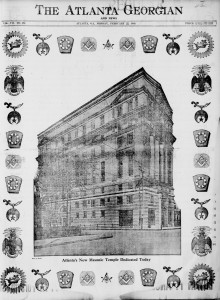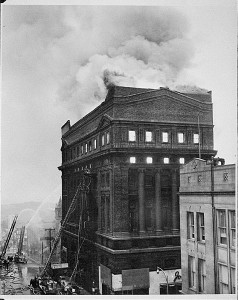The Digital Library of Georgia (DLG) is pleased to announce the addition of the WSB radio logs to the DLG and to the Digital Public Library of America (DPLA).
View collection: http://bit.ly/U7312q

The radio logs document programming in the early years of WSB Radio, Atlanta’s first radio broadcast station. The logs, which span 1922 to 1949, document WSB programming during the “Golden Age of Radio.” They contain a combination of program listings, technical information, and transcriptions of radio “conversations” between engineers at WSB and ham radio operators. The shows included market reports, weather forecasts, news, old-time and gospel music performed by regional musicians, game shows, variety acts, and soap operas. Many programs and performers included in the logs are recognizable today, such as Guiding Light, Dick Tracy, Eddie Cantor, and the Ziegfeld Follies.
WSB (“Welcome South, Brother”) Radio, was created on March 15, 1922, when it broadcast “Light Cavalry Orchestra” at a power of 100 watts. Originally owned by The Atlanta Journal, the station was first located in a makeshift studio on the fifth floor of The Journal building on Forsyth Street in downtown Atlanta. Hailed as the “Voice of the South,” WSB Radio was a pioneer, being the first station to adopt a slogan, broadcast a complete church service, and employ radio as an educational medium by establishing “WSB’s University of the Air.” These were daily broadcasts conducted by the faculties of Georgia Tech, Emory University, Agnes Scott College, and Cox College. WSB was also the first station to use a musical signature, a practice later adopted by NBC. When the station became an affiliate of NBC in 1927, its programming expanded to include commercials. The logs are a rich resource for those interested in radio broadcasting history, early 20th century radio advertising, and Georgia’s cultural and technological contributions to the “Golden Age of Radio.”
As a service hub for the DPLA, the Digital Library of Georgia provides digitization and metadata assistance for its partner institutions around the state. The DLG also aggregates and shares metadata about digital items with the DPLA, allowing the DPLA to act as a portal to these collections. Thanks to grants from the John S. and James L. Knight Foundation and the Arcadia Fund, the Digital Library of Georgia has digitized and described these items for inclusion in both the DLG and the DPLA.



